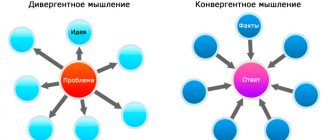Kaizen is a philosophy of continuous improvement, the Japanese key to success.
Translated from Japanese, “Kaizen” is “changing something for the better.” With the help of the Kaizen system, global entrepreneurs are constantly improving sales, production and all production processes.
The application of the Kaizen philosophy should yield results : increased productivity, improved quality, increased safety, reduced costs and increased customer demand.
By planning your life according to Kaizen, you can become an order of magnitude more successful in just 2-3 years.
The key skill of personal effectiveness and a proactive person is living by principles similar to the Kaizen philosophy. The approaches of the Kaizen system can be applied to any area of life: health, psychology, work and finance.
general information
What is Kaizen? This is a Japanese philosophy aimed at normalizing, taking production to a new level. People first started talking about it in the period after World War II. At that time, several large Japanese companies were looking for a way to recover from the military turmoil they had experienced.
The Kaizen system was created by Masaaki Imai, founder of KAIZEN Institute Consulting Group lean and Cambridge Corporation. The introduced concept literally means changes for the better (kai - changes, zen - for the better). His first popularity came in 1986 after the publication of a book dedicated to this technique, “Kaizen: the key to the success of Japanese companies.”
The Kaizen system is an increase in the efficiency of the company, continuous improvement through a complete change in management.
Technology and features of Kaizen
Any business includes several processes. Most often this is production, accounting, communication with clients and suppliers, and customer service. To optimize, pay attention to each point. If something is ignored, production efficiency will decrease. To avoid this, notice even the little things.
Improvement cycle PDCA, SDCA
Each iteration assumes the following sequence:
- Plan (plan) / Standard (standardize);
- Do (execute);
- Check (check);
- Act (improve);
Instead of planning, standardization (SDCA) is sometimes implied. But in essence, standardization and planning are related concepts. Planning is needed to improve a business process, and standardization is needed to maintain it.
This cycle has something in common with the classical management scheme: planning, motivation, organization and control in the classical school of management.
Kaizen philosophy as part of lean manufacturing
Lean manufacturing is the goal of all businesses. The Kaizen system is the way to achieve it. To do this, you need to follow a number of principles:
- The main idea of Kaizen is the constant improvement of skills, abilities, and technologies. If production is not changed for the better, costs will rise. Along with them, the price of products will increase and its competitiveness will decrease. To avoid this, make development a habitual state, do it every day.
- Managers who strive to earn more usually do not think about their employees. Therefore they will lose money, people and a good name. They also need to show respect for the team and show the importance of clients.
- The company should not depend on the number of orders. That's what Henry Ford said. He is partly right, since downtime in the absence of orders leads to additional costs. If they are reduced, the price of the product will decrease. And this will lead to the emergence of new customers and increased turnover. The workload on staff will be even.
- Storing excess products in a warehouse is also associated with waste. They will also occur in cases where suppliers delay deliveries of required components. The Kanban system will help correct the situation. According to her, everything must be done on time.
- Everything in production must be of high quality. These are additional elements, parts, packaging, transportation. It is better to see and correct small errors in the initial stages.
Stages of improvement
Any company that decides to take measures to get out of the crisis must go through the following stages:
- Set yourself the main goal - to improve the quality of the product and increase the competitiveness of the organization. Moreover, this goal must be stable, regardless of the success and popularity of the product.
- Adopt the Kaiza philosophy, from the manager to the cleaner or janitor.
- Organize production so that the emphasis is on quality rather than quantity.
- Minimize costs and all sorts of expenses and disruptions.
- Do not stop improving the quality of service, thinking about how to take maximum care of customers.
- Constantly train and improve the skills of your employees, creating the so-called Institute of Work.
- Organize the process so that it is comfortable not only for clients, but also for employees.
- Personnel must feel important and needed, then they will be ready to take responsibility for the development of the company.
- Production activity should be without restrictions and barriers. What I mean is that you shouldn't put boundaries between departments, it's better if they work together. This way they will be able to predict any problems and jointly find ways to solve them.
- It is important to understand that the system itself is responsible for the efficiency and quality of the product, so you should not blame or fine employees for a decrease or lack of sales.
- It is imperative to study all the nuances that interfere with the full-fledged activities of staff in order to eliminate them and increase production efficiency.
- Purchase equipment that will simplify the work process.
- Introduce a self-development program at the corporate level.
- To motivate absolutely every employee so that he not only strives to benefit the corporation, but also wants to stay in it as long as possible, improving and advancing.
Concept and rules of Gemba Kaizen
This is one of the main tools of lean manufacturing according to the Kaizen system. The word gemba means a real place. This could be a construction site, a production workshop, etc.
Gemba Kaizen involves improving workplaces, which will have a beneficial effect on the work of the company or production as a whole. Here you need to adhere to 5 rules:
- To resolve the problem, visit your workplace. This way you will get reliable information about what went wrong. You will also make the most appropriate decision.
- Determine what the problem is. This could be a person, equipment, materials, method of work, calculations.
- To prevent the situation from getting worse, find a temporary solution.
- Find the root cause of what happened.
- To avoid similar situations in the future, record the essence of the problem and its solution on paper.
These rules of the Kaizen system protect against stressful situations and production problems. They also help prevent unnecessary waste of time and money.
TQM in practice
As an example of Total Quality Management, I would like to cite the Indian company National Engineering Industries Limited (NEI), the flagship company of the CK Birla Group. In 2015, she received the Deming Award, an honorary prize in quality management.
NEI manufactures bearings under the NBC Bearings brand for the automotive and railroad industries. The production capacity of NEI's four factories is designed to produce thousands of sizes of bearings. It is the only bearing manufacturer in India that has its own research and development center. The company's products are exported to 21 countries, including the USA, Germany, Japan and Australia, and are used in products of the Honda, Suzuki, and Daimler brands.
NEI puts consumers first and always adapts to changing market needs. The company adheres to the “Zero Defects” concept in production and supply. Currently at 100 parts per million, NEI plans to reduce it to 50 parts per million over the next three years and below 10 parts per million in the future.
Company credo Be the best that you can be.
Kaizen and management
As stated above, the essence of the Kaizen system is the constant improvement of management and production methods. Management in this case helps employees work in a way that fully meets the standards. If this fails, the employee undergoes training. Another option is to adjust the standards. The better the management, the more such events are held.
Generally speaking, the Kaizen system is aimed at developing a positive attitude towards the work process in employees. There is no “carrot and stick” method here. Workers are not given orders. They are encouraged. They accept proposals for improving the work process, ideas, and include them in discussions at boards of directors. And then they decide how to apply these ideas in practice. Management does everything possible to motivate the team to work even better, grow, and develop.
In companies working according to the Kaizen system, the top manager is always aware of what is happening on the work sites. He is interested in even minor details.
According to Kaizen, solving social problems is just as important as solving economic ones. Workers must be involved in the work process. Thanks to this, labor productivity and the quality of manufactured products will increase. Its popularity among clients will also increase.
TQM principles
One of the founders of the TQM movement, Professor Kaoru Ishikawa, formed six features of total quality management in Japan:
- TQM is applied throughout the company with the participation of all employees.
- The importance of education and training.
- Work of QC circles.
- Regular TQM audits by senior management or external organizations.
- Use of statistical methods.
- State support for TQM.
The Total Quality Management methodology contrasts sharply with the approaches of traditional quality management:
| Principles of traditional quality management | TQM principles |
| Customer satisfaction | Satisfaction of consumers, employees and society as a whole |
| Actions to improve product quality | Actions to improve the quality of processes and systems |
| Corrective impact on quality | Preventive impact on quality |
| Quality management training for quality control department employees only | Quality management training for all employees |
| Only the quality control department is responsible for quality | All employees are responsible for quality |
| Solving only urgent quality problems, “plugging holes” | Finding and solving chronic problems |
| Dedicated solution to quality problems | Employee interaction when solving quality problems |
W. Edwards Deming was directly involved in the formation of the TQM concept. He formulated a 14-point algorithm of actions for implementing the TQM concept:
- Ensure consistency in product and service improvement goals.
- Adopt a new philosophy.
- Eliminate reliance on inspections to achieve quality.
- Stop choosing partners solely based on price. Instead, reduce your overall cost by working with a single supplier.
- Continually and forever improve every planning, production and service process.
- Introduce on-the-job training.
- Encourage leadership.
- Get rid of fears.
- Break down barriers between staff from different functional areas.
- Eliminate slogans, appeals and workforce targets.
- Eliminate numerical quotas for the workforce and numerical targets for managers.
- Remove barriers that prevent people from taking pride in workmanship and eliminate annual rankings or merit systems.
- Organize a vigorous training and self-improvement program for everyone.
- Engage everyone in the company in the transformation effort.
What does zero waste mean in the Kaizen system?
The production management method according to the Kaizen system suggests dividing activities in an enterprise into 2 groups:
- those that provide value;
- not bringing value.
The latter include:
- storage of surplus products in warehouses;
- simple production;
- transportation losses;
- losses from unnecessary actions.
You can also add the release of defective products to the list. You need to get rid of such actions as soon as possible. This is the only way to minimize the unjustified waste of time, financial and other resources.
How to implement the Japanese system - Kaizen blitz
It takes a lot of time to implement the Kaizen concept in production. The Kaizen Blitz seminar will help speed up the process. Within 1 to 2 weeks, staff will learn to apply the basic principles of this method in their work. The implementation of the Kaizen system is carried out in 3 stages:
- Preliminary preparation. This is studying the features of production, searching for a problem area, forming a team, and developing an event plan.
- Directly Kaizen blitz. Participants get to know each other. Responsibilities are distributed between them. Afterwards, the situation that has arisen is thoroughly analyzed. The company's employees propose and test ideas, implement them into production, and come up with new standards.
- At the last stage, participants prepare a presentation and report the results.
After completing the training, all that remains is to monitor the implementation of plans.
Life
The Kaizen principle is suitable for any area. For example, you want to start leading a healthy lifestyle.
Accuracy
Set aside half an hour when you will not be distracted. Sit down, divide the piece of paper into two parts and write down everything that bothers you in one column, and everything that helps you in the second.
Order
Make a schedule that includes everything useful: a walk at lunch, Nordic walking in the park, cycling. You can also simply make a list of the things you need to pay attention to. For example, create a schedule for avoiding junk food and including healthy foods in your diet. This must be done gradually, otherwise the body will rebel, demanding a dose of simple carbohydrates to which it is accustomed.
Purity
Maintaining cleanliness is very important, no matter what goals you set for yourself. In a cluttered room, a person loses the desired mood. In addition, cleaning can be turned into a preparatory stage of physical activity. Or make it a meditative process, when you need to focus exclusively on physical actions and completely clear your head of thoughts.
Standardization
Now it's time to turn all the changes into a system. Just stick to a schedule and it will become the basis of your lifestyle.
Discipline
Look after yourself and get rid of cravings for old habits. At first, a healthy lifestyle is not easy: there are so many temptations around that it is difficult to resist. Improve yourself by finding new ways to make your reality better.
The difference between traditional management systems and the Kaizen system
For convenience, the differences are collected in a table.
| Characteristic | Classic control | Kaizen method |
| Target | Eliminate competitors. | Increase the number of clients. |
| Market | Everything possible is made. | We produce what customers need. |
| Management | Work process oriented. | Not only process oriented. The result is just as important. |
| Management culture | Methods for solving a problem are discussed after it occurs. | Measures are being taken to prevent the problem. |
| Finding solutions to problems | If something happens, the first question is: whose fault is it. | It is being determined how the failure occurred. |
| Attitude to change | Changes are not welcome. | Changes happen regularly. |
| Production process, sales | They are considered two separate areas. | Closely related to each other. |
| Who is a leader | Boss. | Trainer. |
| Attitude towards employees | Employees are an expense item. | Employees are company assets. |
| Problem solving | The problem is resolved at a management meeting. | The search for a solution is carried out at the workplace or gemba. |
| Regulations | They are registered once. They don't change. | Subject to change. |
| Workplace, platform | Considered a source of problems. | This is the source of improvement. |
| Team training | It is not carried out for everyone. | Conducted for all team members. |
| Employee performance analysis | Only weaknesses are assessed. | The best qualities are taken into account. |
| Working methods | Routine. | Continuous workflow improvements. |
| Management development | The manager has a narrow specialization. | A leader has many skills. |
| Management Information | Access is limited. | Available to everyone. |
The Japanese Kaizen management system wins in every way.
Applications
There are many project management services that allow you to control the work of production, IT teams and digital agencies that profess Kaizen or Total Quality Management. And there is Worksection.
Worksection
The Saas service allows you to establish such transparent communication between management and the team, between the company’s client and the contractor, right down to the hired freelancer, that quality control and continuous improvement of the product are inevitable.
In Worksection (both mobile and desktop versions) you can:
- comment on tasks, assign a performer and a person responsible for them, show them to the client without internal details
- set deadlines and budget for each task, control and adjust expenses
- make checklists, add files to public access
- assign tags and statuses to tasks, emotions to comments and tasks - that is, have a live and open chat with the team in the context of the work process
- The Gantt chart allows you to visualize the progress of tasks, and the By People reports allow you to see the workload of your team.











